When it comes to the Everest Base Camp Trek, there’s a lot more than just the stunning views of the world’s highest mountain. This 15-day trek offers a unique blend of culture and adventure, guiding trekkers through lively Sherpa villages and past iconic landmarks like the Hillary Suspension Bridge. Each step brings a new challenge and breathtaking scenery, but it’s the preparation that can make or break the experience. So, what should trekkers be aware of before packing their bags and heading out into the Khumbu region?
Key Points
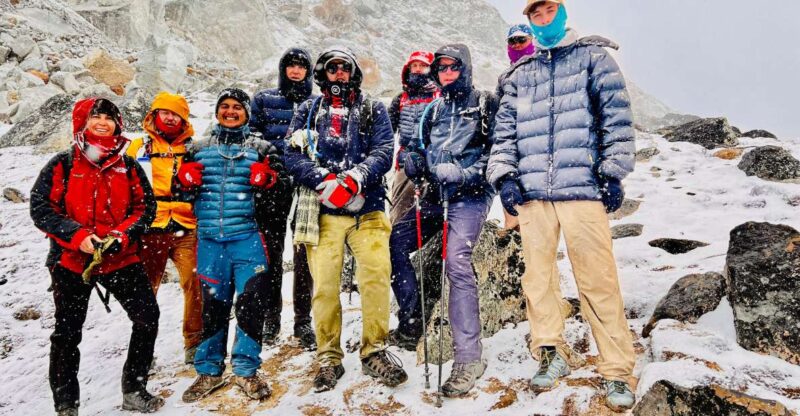
- The Everest Base Camp trek lasts 15 days, reaching an altitude of 5,364 meters with stunning views of surrounding peaks.
- The trek begins with a scenic flight to Lukla and includes charming Sherpa villages, including Namche Bazaar for acclimatization.
- Accommodation consists of cozy lodges and tea houses, with three organic meals provided daily during the trek.
- Essential preparation includes regular hiking for endurance, proper gear, and understanding altitude sickness prevention strategies.
- Cultural respect is vital; greet locals with ‘Namaste’ and seek permission before taking photos of people or sacred sites.
Trek Overview and Highlights
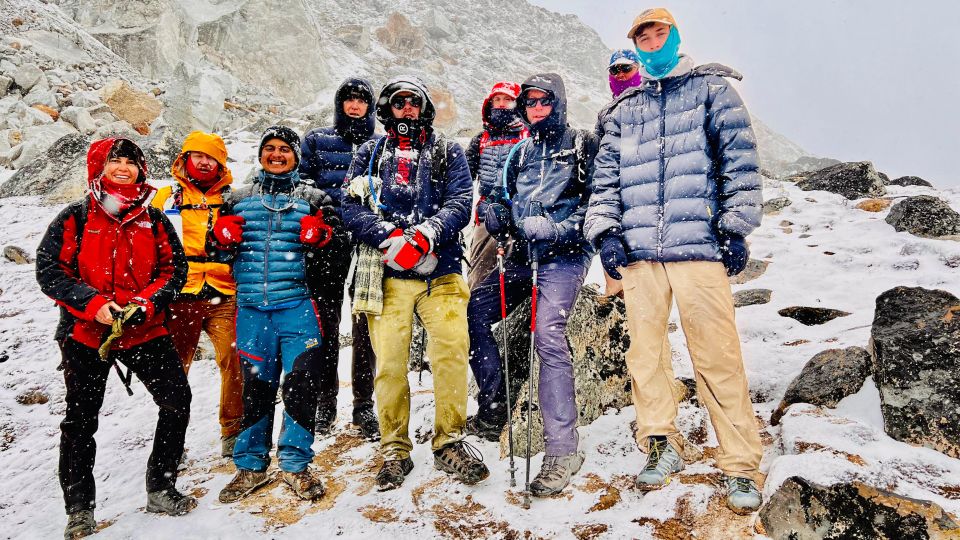
The Everest Base Camp Trek offers an unforgettable adventure, taking trekkers on a stunning journey to the foot of the world’s highest peak, Mount Everest, over a thrilling 15-day period.
Reaching an altitude of 5,364 meters (17,598 feet), this trek isn’t just about the destination; it’s about the experience. Trekkers enjoy breathtaking views of Everest and other majestic peaks while seeing rich Sherpa culture.
Key landmarks like the Hillary Suspension Bridge, the serene Tengboche Monastery, and the iconic Kalapathar add to the trek’s allure.
With challenging trails and diverse landscapes, every step brings a new thrill, making it a must-do for adventure seekers eager to explore the heart of the Himalayas.
You can also read our reviews of more tours and experiences in Pheriche.
Itinerary and Route
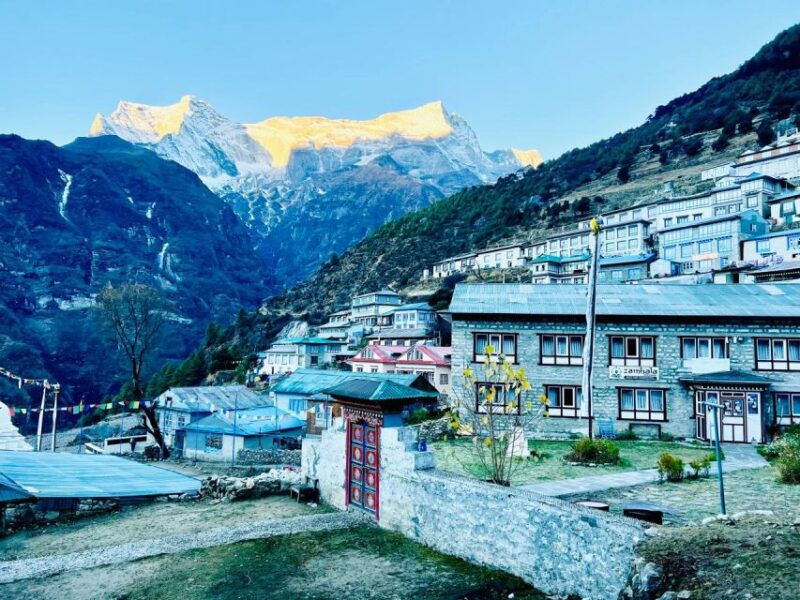
Starting off with a scenic flight to Lukla, trekkers kick off their unforgettable journey into the heart of the Himalayas.
From Lukla, the trek winds through charming Sherpa villages, with Namche Bazaar serving as a bustling hub for acclimatization.
The route continues along the Dudh Kosi valley and leads to the famous Tengboche Monastery, where stunning views of Everest await.
Trekking onward, they pass through Pangboche and Pheriche, gradually making their way toward the Khumbu Glacier.
Lobuche and Gorak Shep mark the final stops before reaching Everest Base Camp.
Each step brings trekkers closer to the majestic Khumbu ice falls, making the journey not just a trek, but an adventure filled with spectacular landscapes and rich culture.
Inclusions and Accommodations
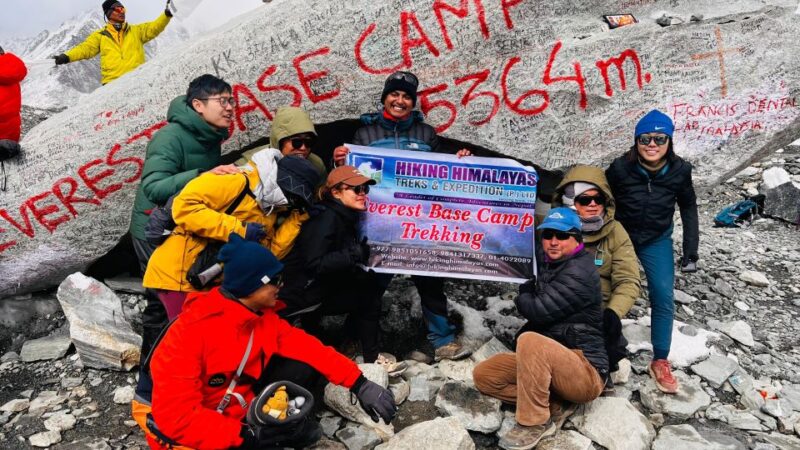
Trekking to Everest Base Camp comes with a variety of inclusions that ensure a comfortable and memorable experience for adventurers.
Participants enjoy airport pickup, a farewell dinner, and three nights at a 3-star hotel in Kathmandu.
During the trek, they’ll stay in cozy lodges and tea houses for 11 nights, where the atmosphere is friendly and welcoming.
Meals are taken care of too, with three delicious organic meals daily and safe drinking water provided.
Plus, trekkers have the support of an experienced English-speaking guide and essential porters.
Other helpful inclusions are a medical kit, a Portable Altitude Chamber (PAC), and all necessary permits, making the journey as smooth and enjoyable as possible.
Exclusions and Additional Costs
While the trek offers plenty of inclusions, there are a few exclusions and additional costs to keep in mind for a smooth journey. Understanding these can help trekkers budget more effectively. Here’s a quick overview:
| Exclusions | Additional Costs | Notes |
|---|---|---|
| Nepal visa fee | Extra days due to flight cancellations | Plan for potential delays |
| International airfare | Transportation between Kathmandu & Manthali | Check local transport options |
| Meals before/after trek | Tips for guides and porters | Tipping is customary and appreciated |
Trekking to Everest Base Camp is a fantastic adventure, but being aware of these costs ensures trekkers are well-prepared for anything that comes their way!
More Great Tours NearbyPreparation Tips
Preparing for the Everest Base Camp trek means getting your gear and mindset in check to tackle the challenges ahead.
First off, it’s crucial to build up endurance through regular hiking and cardio workouts. This’ll help acclimatize your body for the altitude.
Next, familiarize yourself with the route and the weather patterns, as conditions can change rapidly.
Stay hydrated and practice good nutrition leading up to the trek.
Mental preparation’s just as important; visualize tackling tough sections and staying positive.
Lastly, connect with fellow trekkers or join an online forum to share tips and experiences. This way, you’ll feel more confident and ready to embrace the adventure of a lifetime!
Essential Gear and Packing List
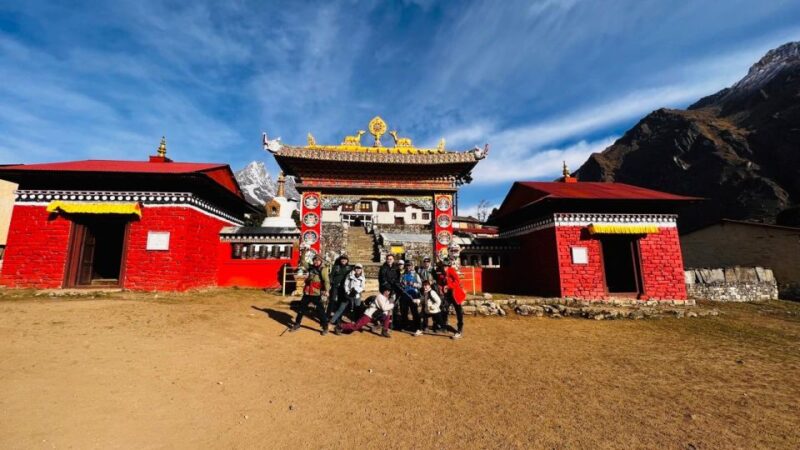
When gearing up for the Everest Base Camp trek, it’s essential to pack wisely to ensure comfort and safety at high altitudes. A well-thought-out packing list can make all the difference.
Here are four must-have items:
-
Layered Clothing: Think thermal base layers, insulated jackets, and waterproof outer layers to tackle varying weather.
-
Sturdy Hiking Boots: A good pair of boots provides support and traction on rocky and uneven terrain.
-
Sleeping Bag: A high-altitude sleeping bag rated for cold temperatures keeps trekkers cozy at night.
-
Trekking Poles: They reduce strain on knees and provide stability on steep trails.
With the right gear, trekkers can focus on enjoying the breathtaking views and unique experiences along the way.
Health and Safety Considerations
Packing the right gear is only part of the equation; staying healthy and safe during the Everest Base Camp trek is just as important.
Trekking at high altitudes can lead to altitude sickness, so it’s crucial to ascend slowly, hydrate, and listen to your body. Regular breaks help, too.
Travelers should carry a basic first-aid kit and know how to use it. It’s wise to have travel insurance that covers emergencies, including helicopter evacuations.
Staying fueled with nutritious meals is vital, and avoiding alcohol can make a difference.
Lastly, maintaining a positive mindset and being prepared for unpredictable weather can significantly enhance the trekking experience.
With these considerations in mind, trekkers can enjoy the adventure safely and responsibly.
Cultural Insights and Etiquette
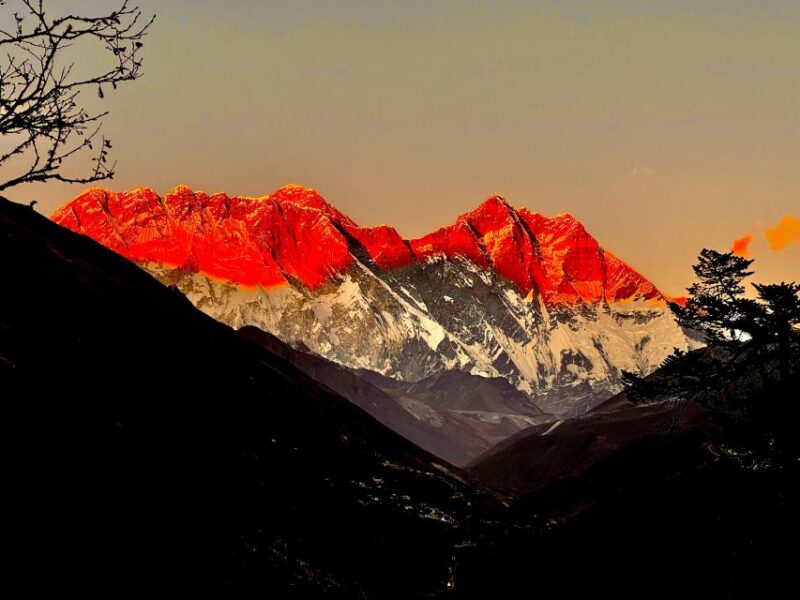
Understanding the rich Sherpa culture and practicing respectful etiquette can greatly enhance a trekker’s experience on the journey to Everest Base Camp.
Here are some key cultural insights and etiquette tips:
-
Greetings: Always greet locals with a friendly ‘Namaste’ and a slight bow, showing your respect.
-
Photography: Ask for permission before snapping photos of people or sacred sites; it’s a sign of respect.
-
Dining Etiquette: When dining, use your right hand for eating and passing food, as the left is considered unclean.
-
Dress Modestly: Wear respectful clothing, especially in monasteries and local villages, to honor their customs.
Frequently Asked Questions
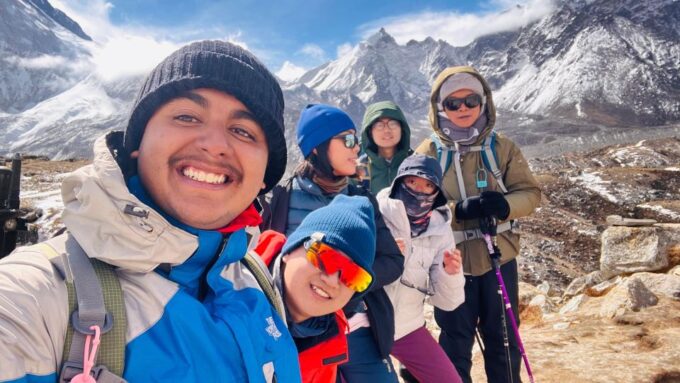
What Is the Best Time to Trek to Everest Base Camp?
When planning a trek, spring (March to May) and autumn (September to November) are the best times. These seasons offer clear skies, mild temperatures, and stunning views, making the experience truly unforgettable for adventurers.
How Physically Fit Do I Need to Be for This Trek?
For this trek, he needs a decent fitness level. Regular cardio and strength training’ll help him tackle steep trails. It’s not a walk in the park, but with some prep, he’ll manage just fine!
Are There Age Restrictions for Trekking to Everest Base Camp?
There’re age restrictions for trekking, as it’s not suitable for individuals over 95, or babies under a year. Anyone in between should consider their fitness level and health before embarking on such a challenging journey.
Can I Trek Solo to Everest Base Camp?
He can trek solo, but it’s not recommended due to safety and navigation challenges. Hiring a guide enhances the experience, providing local knowledge and support, while ensuring a safer, more enjoyable journey through the stunning landscapes.
What Type of Weather Can I Expect During the Trek?
During the trek, he can expect variable weather—sunny days, chilly nights, and possible rain or snow. Temperatures fluctuate significantly, so layering up and being prepared for sudden changes is essential for comfort and safety.
Recap
To sum it up, the Everest Base Camp Trek is an adventure like no other, blending stunning scenery with rich Sherpa culture.
With the right preparation and gear, trekkers can conquer the challenges and soak in the breathtaking views.
From the thrill of crossing the Hillary Suspension Bridge to the serenity of Tengboche Monastery, this trek offers unforgettable memories.
So, lace up those hiking boots and get ready for the journey of a lifetime—Mount Everest awaits!
You can check availability for your dates here:More Hiking & Trekking Tours in Pheriche
More Tour Reviews in Pheriche
Not for you? Here's more nearby things to do in Pheriche we have reviewed
- Everest Base Camp Trek
- Kathmandu: 20 Day Everest Base Camp Trek with Kalapatthar
- Kathmandu : 14 -Day Everest Base Camp with Kala Patthar Trek
- Everest base camp trek 12 days
- Lukla: 11-Day Everest Base Camp Trek from Lukla with Guide
- Nepal: Everest Base Camp with Kalapathar Trek
- From Kathmandu: 12 – Day Everest Base Camp Guided Trek
- Kathmandu: Everest Helicopter Tour with Syangboche Landing
- From Kathmandu: 11- Day Everest Base Camp Trek with Guide
- From Pokhara: 11-Day Budget Everest Base Camp Trek
- Kathmandu : Budget 15-Day Everest Base Camp Trek /2025
- From Lukla: 18-Day Everest Base Camp and Gokyo Lakes Trek
